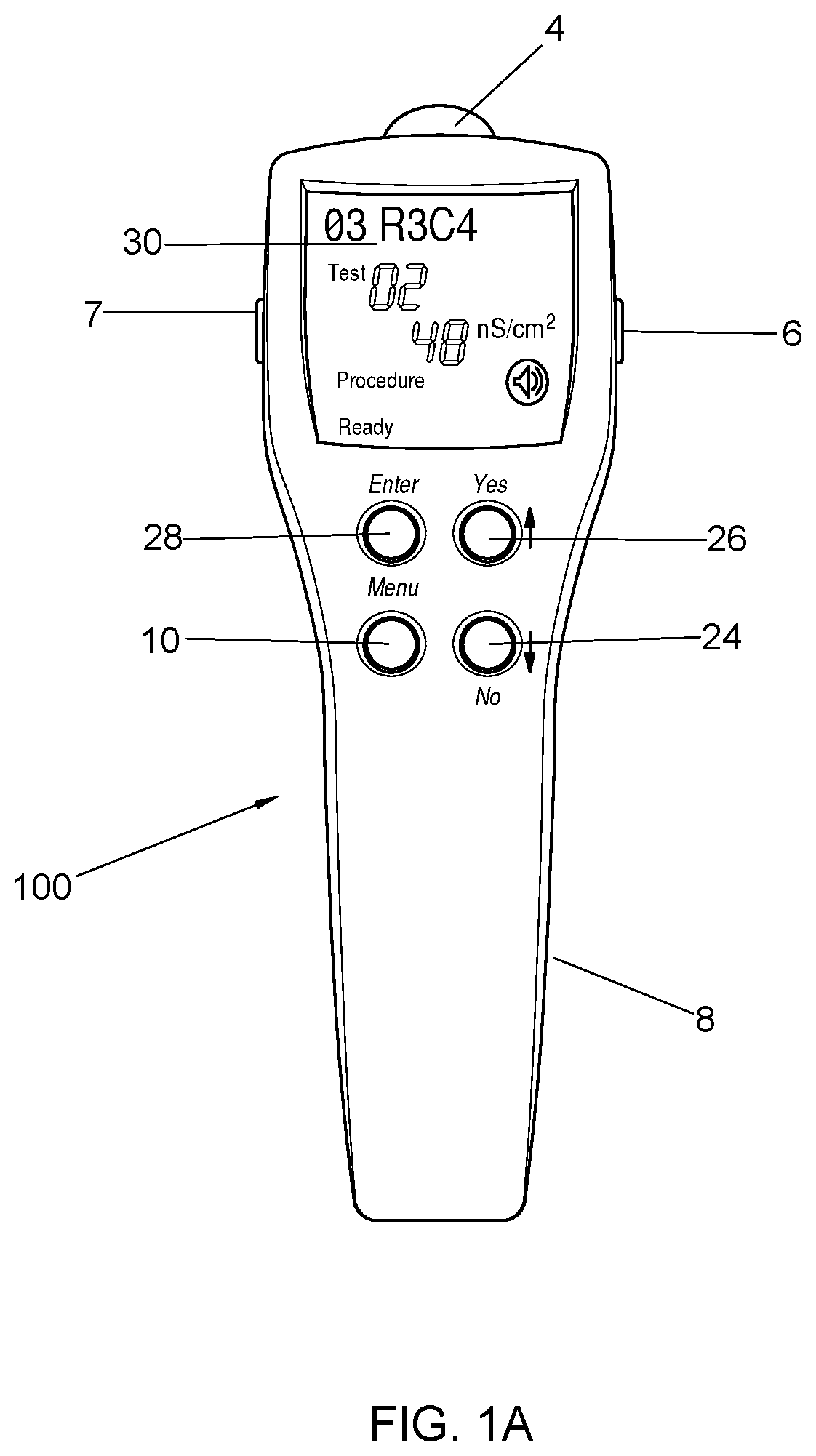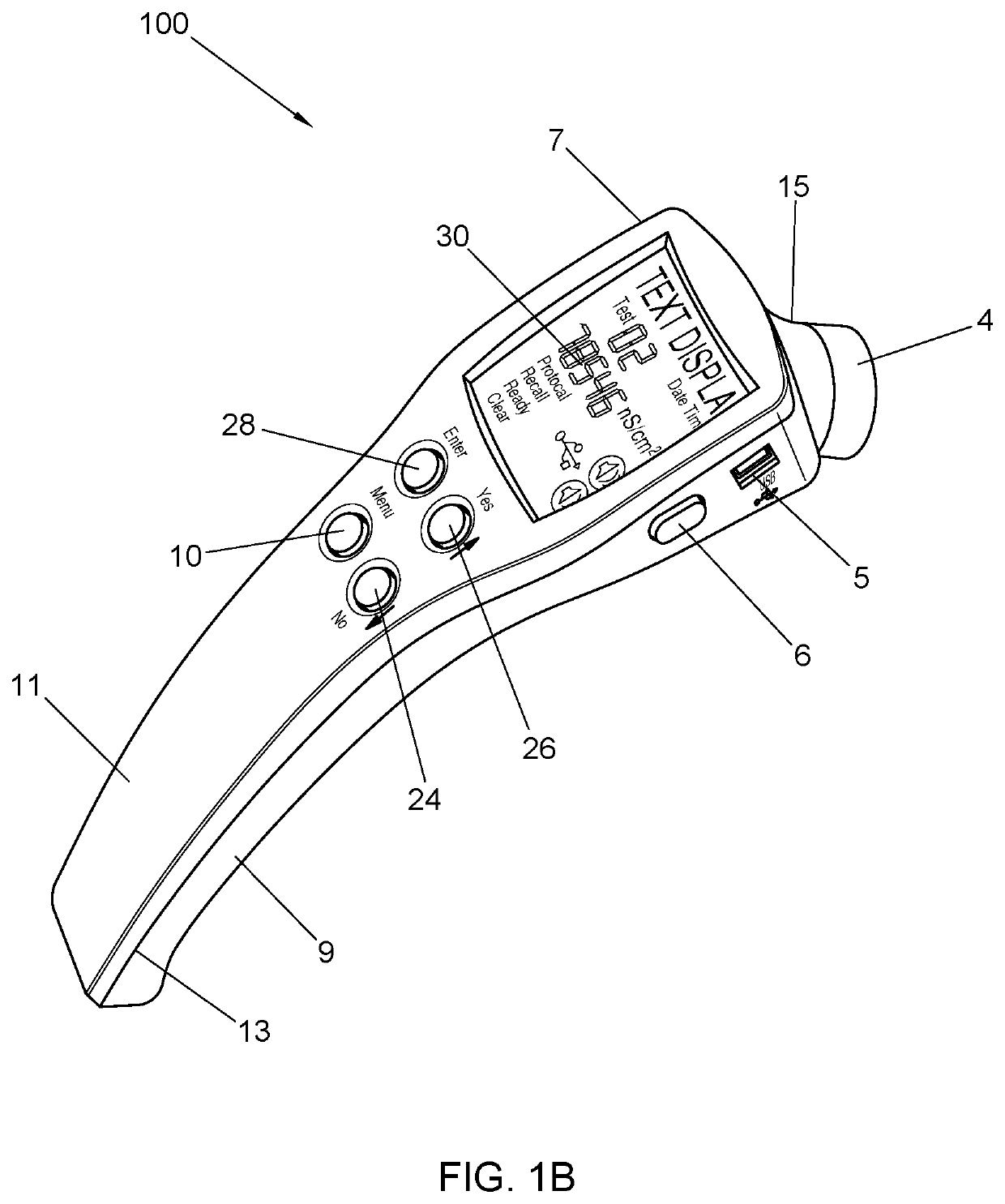System and method for the objective evaluation of sympathetic nerve dysfunction
a sympathetic nerve and objective evaluation technology, applied in the field of apparatus, system and method for the non-invasive sudomotor assessment of corporeal pain, can solve problems such as ensuring that the instrument is properly aligned, providing an error reading, and causing problems such as problems
- Summary
- Abstract
- Description
- Claims
- Application Information
AI Technical Summary
Benefits of technology
Problems solved by technology
Method used
Image
Examples
examples
[0117]The present invention provides a comprehensive system for the quantitative assessment of regional sympathetic sudomotor dysfunction which is useful in the objective assessment of sympathetically maintained pain syndromes; a painless electrodiagnostic method requiring no sensory stimulation or subjective reports by patients; a handheld, self-powered device with an LCD display; a rapid and simple test procedure with automatic report generation; a HHSIFDA Regulatory Class II non-invasive device; and a sympathetic skin assessment approved by Medicare and most insurance companies for procedure reimbursement.
[0118]In illustrative embodiment an improved meter and monitoring system of the present invention of the inventive is presented in FIGS. 1-4. FIGS. 1A, 1B, and 2A respectively depict top-down, perspective, plan views of a diagnostic device (100) designed in accordance with the principles of the present invention. Device (100) includes a housing (8) fabricated of upper (11) and l...
PUM
 Login to View More
Login to View More Abstract
Description
Claims
Application Information
 Login to View More
Login to View More - R&D
- Intellectual Property
- Life Sciences
- Materials
- Tech Scout
- Unparalleled Data Quality
- Higher Quality Content
- 60% Fewer Hallucinations
Browse by: Latest US Patents, China's latest patents, Technical Efficacy Thesaurus, Application Domain, Technology Topic, Popular Technical Reports.
© 2025 PatSnap. All rights reserved.Legal|Privacy policy|Modern Slavery Act Transparency Statement|Sitemap|About US| Contact US: help@patsnap.com



